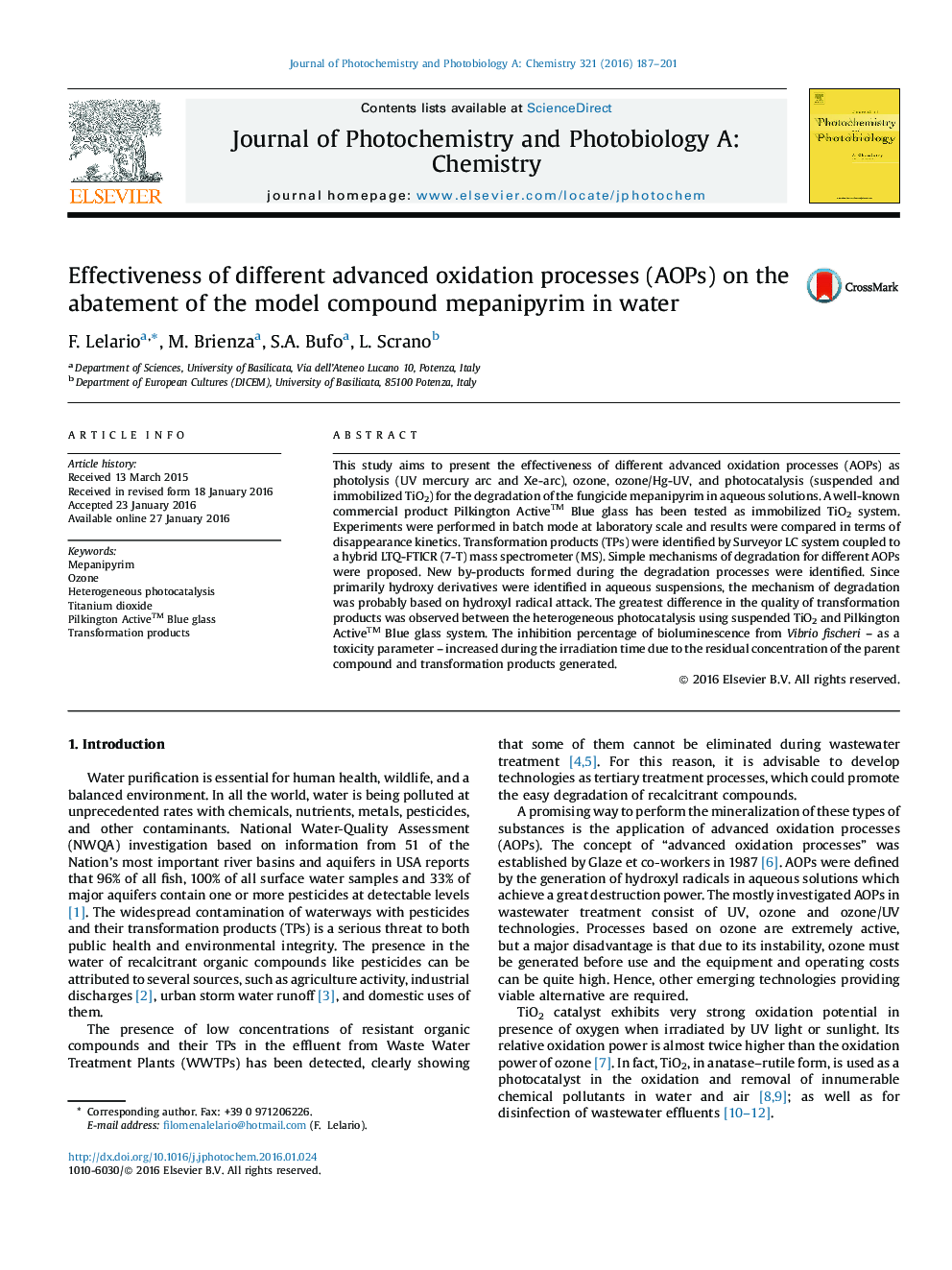| کد مقاله | کد نشریه | سال انتشار | مقاله انگلیسی | نسخه تمام متن |
|---|---|---|---|---|
| 26267 | 43943 | 2016 | 15 صفحه PDF | دانلود رایگان |

• Photo-degradation of mepanipyrim in aqueous solution has been studied under different AOPs.
• Synergistic effect of O3 and UV enhances the degradation process of mepanipyrim.
• Photocatalytic behaviour of TiO2 immobilized on glass sheets has been ascertained.
• New photoproducts have been detected and tentatively identified by LC–FTICR MS.
This study aims to present the effectiveness of different advanced oxidation processes (AOPs) as photolysis (UV mercury arc and Xe-arc), ozone, ozone/Hg-UV, and photocatalysis (suspended and immobilized TiO2) for the degradation of the fungicide mepanipyrim in aqueous solutions. A well-known commercial product Pilkington Active™ Blue glass has been tested as immobilized TiO2 system. Experiments were performed in batch mode at laboratory scale and results were compared in terms of disappearance kinetics. Transformation products (TPs) were identified by Surveyor LC system coupled to a hybrid LTQ-FTICR (7-T) mass spectrometer (MS). Simple mechanisms of degradation for different AOPs were proposed. New by-products formed during the degradation processes were identified. Since primarily hydroxy derivatives were identified in aqueous suspensions, the mechanism of degradation was probably based on hydroxyl radical attack. The greatest difference in the quality of transformation products was observed between the heterogeneous photocatalysis using suspended TiO2 and Pilkington Active™ Blue glass system. The inhibition percentage of bioluminescence from Vibrio fischeri – as a toxicity parameter – increased during the irradiation time due to the residual concentration of the parent compound and transformation products generated.
Figure optionsDownload as PowerPoint slide
Journal: Journal of Photochemistry and Photobiology A: Chemistry - Volume 321, 1 May 2016, Pages 187–201